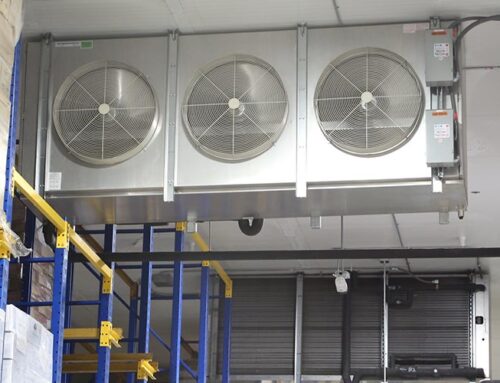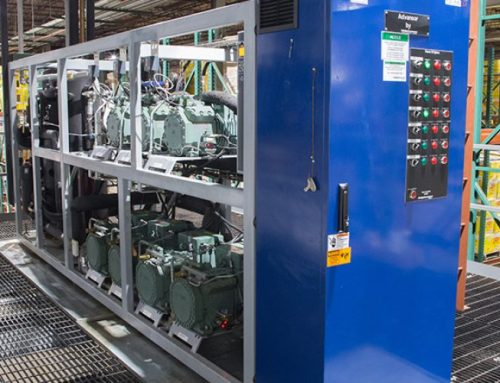What Are the Key Trends in the Food and Beverage Production and Processing Industry?
Rising demand in emerging markets, consumer lifestyle changes, and a quantum advancement in technological abilities has driven a robust Food and Beverage Production growth pace in recent years. The segment is experiencing a period of fundamental change as evidenced by the onset of artificial intelligence and process automation as well as growing demand for organics. Food and Beverage Production equipment companies across the three key sub-sectors of processing, packaging, and commercial food service have a chance to reap substantial gains. However, in order to accomplish this, they must adapt their business model and processes to conform with the changing environment. Here are some of the more significant trends that the industry will encounter in the near term:
Frozen Foods Stay Strong and Continue to Grow
For many years now, conventional wisdom has associated frozen foods with poor quality and questionable nutritional value (think TV dinners). This belief has changed dramatically in recent years. In addition to becoming a staple in many home refrigerators, frozen foods continue to grow in popularity at restaurants with a constant stream of new menu items continuing to augment their overall offerings. In 2021, Martha Stewart launched a gourmet frozen food Line featuring everything from appetizers to desserts. And continuing with the health-conscious theme, even Nestle has gotten into the act with the introduction of fan-favorite DiGiorno gluten-free crust pizza. Further driving growth, 72 percent of frozen food consumers combine frozen and fresh ingredients according to the American Frozen Food Institute, and notes that frozen pizza sales in the United States have been steadily rising — up from $4.98 billion in 2019 to $5.47 billion in 2020 with a projection of rising to $6.06 billion in 2021.
Automation Presents Opportunities and Potential Solutions
One of the ill side effects of the COVID-19 pandemic was the creation of labor shortages throughout many industries. Struggling to find labor to replace the shortfall, manufacturers have turned to automation as a solution to help address this challenge. The lack of available labor is going to continue pushing automation as a solution for some time to come. Although the degree of applicability of automation differs between various processors, manufacturers should carefully analyze their situation to determine if automation can provide more output for them. For those cases where this is true, priority needs to be given to integrating such action.
Although there’s been talk of more automation for years – Europe is ahead of the U.S. here – the perfect storm formed by the labor shortage, inflation, and supply chain issues is making this conversation much more serious and immediate in nature for many in the food processing industry.
While the market recognized the opportunity years ago for food contact robotics, the food processing industry wasn’t ready. The past 18 months helped change all of that and prepare more processors for the need to invest in this change. Automation serves as one significant solution to compensate for the lack of laborers available to operate their production line. Correspondingly, it would behoove processors to accelerate their automation considerations sooner than they might have planned.
Unfortunately, unlike other entities in the food industry, processors have traditionally been reluctant to embrace automation. Others, such as farmers, have been using it for years. One such application is the use of automation satellites which enables them to farm 50 times the acreage with fewer manual laborers. On the other end, delivery services are leveraging it as much as possible. It’s the processors in the middle who have yet to adopt these solutions. Due to sheer necessity and desire for survival, this will likely change sooner rather than later.
Using robotics instead of manual labor has one huge advantage — more sanitary conditions. The risk of COVID, or any of the other issues processors face with a human workforce, is effectively eliminated.
Shifts in Consumer Behavior
Shifting dietary habits and subsequent changes in the way people eat will continue to impact the industry in 2022 and beyond.
Health-conscious is the new name of the game and driving consumers to make healthier choices when it comes to their diets and nutrition. The meat alternatives market has benefited from these trends, growing 45% in 2020 – twice as fast as conventional meats. Besides these alternatives being more environmentally friendly, as this market grows, prices are correspondingly being driven down, thus further increasing their adoption.
The pandemic led many more people to buy food at the grocery store and cook it at home. This trend is going to stay with us, even post-pandemic. It may take a lot for people to go back to eating in restaurants the way they once did. Behavior has changed. As a result of this, processors must give increased consideration to how they package their products. Changes, like portioning for example, are quickly becoming requirements.
Direct–to-Consumer Will Continue to Outpace All Other Distribution Channels
The popularity of this is exploding. 73% of consumers recently bought groceries online. Consumer packaged goods (CPG) companies can compensate for added shipping costs with robust logistics systems, less coupons and slotting fees, increasing their margins while consumers end up paying less. It’s a win-win as it eliminates layers of cost to the consumer. So, who loses in this proposition? Distributors might have to shift their focus more to the food service sector (restaurants, etc.) as their retail revenues could take a hit. Many brick-and-mortar retailers have gotten the message and are growing their ability to serve customers through e-commerce. Stores are no longer remaining complacent on this matter as evidenced by retailers growing their online sales through curbside and home delivery initiatives during the pandemic.
Plant-based and Cell-based Foods Continue to Gain Traction
Plant- and cell-based foods have garnered a new criticality and increased attention, driven in large part by the current environmental concerns and the need to feed the world in the future. An IBM survey found 80% of consumers believe sustainability is important and nearly 60% would change shopping habits to help reduce environmental impact. The survey also found that about 64% of shoppers follow a diet or health-related wellness program—up from 49% in 2018. Additionally, there’s fierce competition as large companies have entered the market for plant- and cell-based foods — Conagra (Gardein Protein International, Inc.), Kraft (Boca Foods Company), and Kellogg (MorningStar Farms) just to name a few of the bigger players. Nestlé is working with Israeli startup Future Meat Technologies, which produces non-GMO cultured meat components from animal cells. JBS recently announced plans to invest $100 million in cell-based meat. Redefine Meat also launched a 3D plant-based meat.




